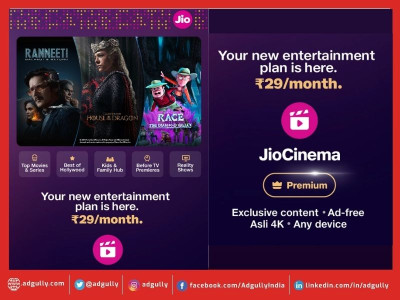How to make Indian influencers a force for good in a pandemic
Authored by Kunal Sawat, Client Engagement Head, INCA India
The last 12 months have sparked a major transformation in India’s influencer marketing culture, but more needs to be done for marketers to leverage their appeal during a time of crisis, writes Kunal Sawant, Head of Client Engagement, INCA India.
From crowdsourcing oxygen tanks to promoting masks and vaccination, influencers have emerged as a significant force in the fight against India’s coronavirus crisis. At a time of fear and uncertainty, stars like Sonu Sood and Akshay Kumar have used their multi-million-strong followings to unite Indians with messages of compassion and hope. However, marketers used to leveraging influencers are now facing a conundrum: how can they maintain consumer relationships without appearing tone-deaf and seeking to capitalise on a national crisis?
While many influencers have been praised for their efforts in the fight against COVID-19, several have come under fire for posting holiday snaps and allegedly taking payments for SOS requests. Criticisms like these risk huge reputational damage for brands affiliated with affected influencers.
Brands need to find new ways of communicating through social media influencers and key opinion leaders (KOL) to channel a message that is mindful of and empathetic to the catastrophic circumstances. Since the second wave escalated in April, huge scrutiny has landed on the stark gap between India's rich and poor, with the nation’s most disadvantaged taking the biggest brunt of new infections and deaths.
Promoting brands via influencers luxuriating on yachts and beachside villas might be apt in normal times but in today’s environment it risks appearing both insensitive and disrespectful to millions of consumers. While influencer culture has long been lauded for its ‘aspirational’ appeal, brand marketers now need to deliver messages that are ‘inspirational’.
In practice, this means a shift in perspectives and communication tone that avoids superficial, sales-driven content and instead forms a more meaningful, two-way and purpose-driven conversation. This can include scientifically backed breathing techniques to strengthen oxygen flow, busting vaccination myths, as well as inspiring content to alleviate the fear and anxiety of people during this period. As more content creators, such as Masoom Minawala Mehta, and brands promote causes they believe in, the more brands can tap into resources and ideas of security, community and trust.
Locked down, locked in
Around 80 per cent of India has been under lockdown since May, meaning brands have fewer opportunities to tap into traditional platforms such as out-of-home. Forced to spend long periods at home, consumers are now more likely to be digitally engaged on their smartphones and on social media platforms.
Even before the spate of lockdowns, eMarketer predicted that digital platforms will account for 1 hour and 39 minutes of Indians’ daily attention with a 7.2 per cent increase in the amount of smartphone usage. Meanwhile, according to WARC, as overall digital ad spend fell by 7.5 per cent to ₹56,490 crores in 2020 because of the pandemic, digital spending still grew strongly by 15.3 per cent.
The numbers are a strong indicator of India’s surge in digital consumption, giving marketers more reasons to tap into the influencer sphere. However, again brands need to be mindful that while they may be dealing with bigger audiences, their mindsets are now different. At least they may be bored, and at worst, they may be traumatised by the current situation.
Influencers can play a pivotal role in helping consumers cope with and find an escape from their present reality. The best influencers are those who cherish their relationships with their followers and put these above product promotions. As such, the most successful marketers will be those that harness those relationships rather than exploit them.
The case for micro influencers - Keeping it simple and relatable
As campaigns become increasingly measured by consumers’ ‘engagement’ levels, marketers are increasingly turning to so-called ‘micro influencers’, KOLs with anything between 1,000 to 100,000 followers.
These can give marketers the opportunity to have deeper and more focused conversations with consumers, especially concerning issues around COVID-19 testing and vaccination. Micro influencers are useful for brands looking to connect with certain audiences related to a particular topic or niche. For example, Taran Singh, or ‘Wheelie Boy Bunny’, may only have 150,000 subscribers on YouTube rather than a million, but his petrolhead-inspired videos routinely gain eyeballs in the five figures and hundreds of comments.
Singh is just one of numerous nano-influencers who has built a robust and dedicated following by documenting his passion. As such, brands leveraging influencers like him can benefit from high engagement and greater authenticity in their content. Consumers have greater trust in them, and brands can expect transparency in working with them. And, given the reduction in many brands’ marketing budgets due to the pandemic, micro-influencers also present a more cost-effective option.
As India continues to battle through this second wave, influencer marketing will continue to play a vital role for brands. If marketers and influencers remain attuned to their audiences and the repercussions of the COVID-19 pandemic, it has the potential to become the most trusted channel in the media toolkit. The pandemic has already created a number of shifts in the way brands work with influencers: with any luck, these new habits of transparency, depth and empathy are here to stay.
DISCLAIMER: The views expressed are solely of the author and Adgully.com does not necessarily subscribe to it.
















Share
Facebook
YouTube
Tweet
Twitter
LinkedIn